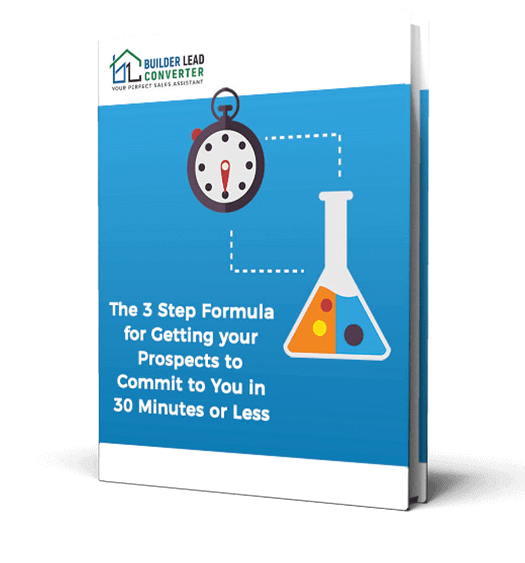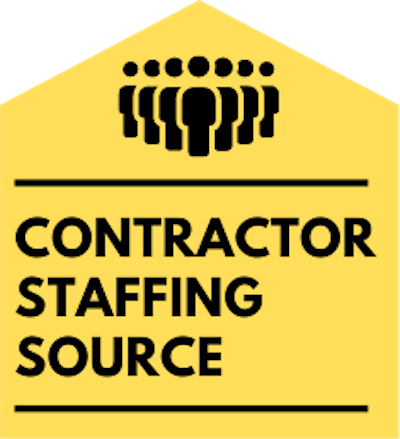How to Create an Effective Home Builder Marketing Plan
Are you a home builder looking for ways to effectively market your business? A solid marketing plan is essential for your success. Without a strategy and plan in place, you’ll be feeling lost and frustrated as your competition zips past you.
But creating an effective marketing plan tailored for your home builder business doesn’t have to be a daunting task. You just need to start with a few thoughtful strategies, stay focused, and fine-tune your approach as you go.
In this blog post, we’ll look at the steps you can take to develop and execute a successful home builder marketing plan. We’ll cover what goes into a solid plan, our favorite tactics, and some handy tools and resources to help you get the job done. Read on to get the inside scoop on what it takes to craft a plan that will help you win more customers and grow your business.
When creating a home builder marketing plan, the most important step is to identify the target audience and define what makes your business unique. Once you have established those points, you can use tools such as SEO, website design, content creation, and social media marketing to reach your desired audience effectively.
Establish Goals for Your Home Builder Marketing Plan
When creating goals, it’s important to be as specific as possible. Focusing too broadly on goals such as ‘increasing brand awareness’ or ‘generating leads’ can be difficult to measure and track. It’s better to set specific objectives such as ‘gain more than 500 Instagram followers this quarter’ or ‘open two new mortgage loans each month’. These goals are achievable and measurable, giving you the ability to track progress and make adjustments along the way if needed.
As with any goal-setting exercise, it’s also important to establish unrealistic expectations that are achievable when setting home builder marketing plan goals. Challenges will arise, so it’s best to ensure that your goals are attainable from the start preventing disappointment later down the line when failures occur.
To achieve success, you should always revisit your goals at regular intervals throughout the life of your home builder marketing plan. Revising goals as necessary is key to adjusting tactics and ensuring that your overall strategy is optimised for ongoing success.
Now that you have established your aims and objectives, it’s time to determine who your target audience is for your home builder marketing plan.
- Research from Harvard Business School found that integrating online and offline marketing strategies can increase ROI (return on investment) for homebuilders by 115%.
- According to a 2019 survey, 76% of surveyed customers reported researching a homebuilder’s website before making any contact.
- A 2020 study found that the number one most important factor when selecting a new homebuilder is positive past customer reviews, followed closely by the availability of energy-efficient features.
Determining Your Target Audience
When creating an effective home builder marketing plan, it is important to determine the target audience of your services. A target audience is a group of people that you hope to reach with marketing messages and influence through products or services that you offer. In order to successfully use home builder marketing plan strategies, you need to be clear about who your intended target audience is so that you can craft messaging and promotional materials that will have the most impact on your target market.
When thinking about your target audience, consider factors such as age, gender, location, income level as well as interests and lifestyle choices. It can also be beneficial to evaluate whether you should focus on targeting a general consumer base or a more specific niche in order to better reach your customers. While targeting a more targeted demographic may help with reaching specific goals and maximizing resources, focusing on a larger consumer base can provide higher visibility for your brand. The decision of which approach to take depends on your unique business needs and goals.
Once you know your target audience, it is important to create content that speaks directly to their needs and interests in order to build a strong presence across all channels. This should include videos, blog posts, social media postings and other content that appeals to different segments within the larger identified group. An effective home building marketing plan often involves multiple approaches tailored specifically for each segment of the larger identified target audience.
Finally, it is important to keep track of measurable objectives when assessing the success of your marketing activity in order to identify areas needing improvement. Measurable objectives could include website visits, email open rates and product conversions from digital campaigns. By tracking progress towards these objectives over time and adjusting strategies accordingly, it will become easier to effectively build out an effective home builder marketing plan for the target audience identified.
Determining the right target audience for a home builder’s services is paramount when developing an effective marketing plan. Now that you have determined your target audience let’s move onto discussing how to reach sales goals with this carefully crafted plan for success.
Reaching Your Sales Goals
A sales goal is an important objective to focus on when creating a marketing plan for your home builder business. Establishing measurable and achievable goals will provide you with the necessary targets that you can use to guide your efforts throughout the marketing process. When setting sales goals, analyze past performance, benchmark against your competitors, and even conduct customer surveys to gain insight into what success looks like in your market. Consider including short-term results (such as increasing total projects sold by 10% per quarter) as well as long-term objectives (such as doubling profits over twelve months).
Remember to keep your goals realistic and achievable; set them too high, and you may suffer from disappointment and frustration, while setting them too low will fail to motivate you. Additionally, it’s a good practice to build in some wiggle room should any technical or other problems arise during implementation.
Once you’ve created measurable goals that are tailored towards achieving your desired outcome, use a traditional pen-and-paper approach or a spreadsheet to track progress and document successes over time. This will allow you to quickly identify areas in need of improvement so that you can adjust your approach accordingly.
Now that we have outlined ways to set and track successful sales goals, let’s move onto developing and promoting your home builder brand identity in our next section.
When creating and executing an effective home builder marketing plan, it is essential to determine the target audience of the services being offered and decide whether the focus should be on a general consumer base or a more specific niche. Once a target audience has been identified, content should be tailored to speak directly to their needs and interests across all platforms. Finally, measurable objectives must be kept track of in order to assess progress and adjust strategies in order to reach sales goals.
Develop and Promote Your Home Builder Brand Identity
Creating a clear, recognizable brand identity for your home builder business is a vital part of building success. It sets you apart from competitors in the industry, enabling potential customers to understand what you offer and why they should choose your services.
Your brand identity should be deployed consistently across all marketing materials. This includes everything from business cards and logos to website content, signage and advertising campaigns. Make sure that all of your messaging reflects a unified image, captured by your company’s tagline, logo and other visual elements.
Try to find a balance between being inspiring and introducing practical information about your services. Your goal is to craft an emotional investure for potential customers that brings them back time and time again. Leverage this consistency of message by including client testimonials, facts about successful build projects or showroom photos in your content creation.
Your brand identity should also consider the use of social media channels; consider what kind of conversation you want to generate around your company on these platforms. You may decide to create profiles on popular platforms such as Twitter, Instagram and Facebook and use them to interact with existing customers while simultaneously reaching prospects through posts promoting new promotions or initiatives within your business.
By developing a distinctive brand identity which is deployed consistently across all channels, your home builder business will gain visibility and trust with potential customers who are more likely to turn into long-term clients.
Now let’s move onto the next section: “Develop Promotional Strategies for Your Marketing Plan”. Here we’ll look at the best ways to promote your home builder business online in order to reach the people who need it most.

Develop Promotional Strategies for Your Marketing Plan
When it comes to home builder marketing plans, developing the right promotional strategies is critical for success. Promotional strategies are campaigns created to increase visibility and sales of a product or service. While there are various methods available, it’s important to create a plan that will effectively capture your target audience and convert leads into sales.
When creating a promotional strategy, it’s important to consider digital and traditional marketing platforms. Traditional platforms include television, radio, print and billboard campaigns while more modern approaches feature digital content such as mobile apps, video ads, website design and social media. There are pros and cons to both techniques but leveraging both approach can help maximize the impact of your campaign.
With traditional campaigns, businesses can access local markets that may not be accessible through digital platforms. Studies have shown that this method can reach a broad, diverse audience with enough impact to drive conversions. However, traditional platforms tend to cost more since ads must be placed manually in each location or region. In addition, brands must also consider fixed schedules for ad placements which requires additional resources to execute successfully.
On the other hand, digital marketing strategies offer greater scalability and flexibility than traditional campaigns as well as lower operational costs. This approach is ideal for businesses seeking shorter-term promotions such as holiday deals and flash sales. Digital marketing also allows businesses to measure performance metrics more accurately on individual campaigns compared to traditional advertising methods. However, this approach relies heavily on having strong technical infrastructure in place in order to generate effective results.
By utilizing both traditional and digital platforms for their promotional strategy, home builders can maximize reach and visibility for their products or services while optimizing their budgets effectively. To truly benefit from this approach though, it is essential that home builders establish the right technical infrastructure and optimize both platforms accordingly. The next section will discuss how home builders can leverage web presence through both traditional and digital platforms to ensure maximum return on investments (ROI).
Utilizing Traditional and Digital Platforms
In the modern world, no home builder marketing plan is complete without considering both digital and traditional platforms. Both have their own unique strengths and weaknesses, but when combined can be used to effectively reach a large number of potential buyers.
Traditional forms of media, such as print or television ads, are still a powerful tool in the home builders’ marketing arsenal. They allow for precision targeting of specific demographics or locations that may be difficult, or too expensive to target with digital ads. However, they are rather expensive compared to digital media options, require significant lead time, and producers must often invest in large-scale campaigns to achieve an effective return on investment (ROI).
On the other hand, digital marketing has seen remarkable growth in recent years and is projected to overtake traditional advertising spending by 2021. One primary benefit it offers is measurability – with access to analytics and tracking tools, marketers can easily measure results from campaigns such as open/clickthrough rates on emails or overall impressions on website banners. More importantly, digital advertising provides more room for personalization and highly targeted messaging. Furthermore, digital media outlets such as websites and social media platforms run 24/7 making them more cost effective than traditional outlets due to absence of airtime premiums.
For any home builder marketing plan to succeed, it is essential to incorporate both traditional and digital platforms in order to maximize ROI while reaching the widest possible audience. Additionally, home builders must maintain flexibility in their strategy so that they can adapt quickly if one form of advertising stops performing well – though finding this balance can be a challenge. However when done right, home builders can expect an increase in qualified leads that will eventually convert into successful sales.
To ensure success of the home builder marketing plan, businesses need frameworks and metrics in place to track performance throughout all channels used. Therefore next we will discuss key measures to track performance of the home builder marketing plan.
Measures to Track Performance of the Marketing Plan
In order to determine whether your home builder marketing plan is effective, you need to have measures in place that track the results. Knowing what works and what doesn’t will help you adjust your strategy and make sure you are getting the most out of your investment.
The best way to track performance is by using analytics tools. For example, Google Analytics can be used to monitor pageviews, time spent on the page, bounce rate, and more. This information can help you develop a better understanding of how people interact with your marketing efforts. Additionally, A/B testing can be used to evaluate the effectiveness of different elements such as copy, visuals, or buttons on a website or app. It can be a time-consuming process but ultimately it helps to inform decisions about changes needed for improvement.
It’s important to track not only the success of each individual element but also measure overall performance at regular intervals. There are many metrics that you can use such as conversion rate, cost per lead, total leads generated, average purchase size, return on ad spend (ROAS), and more. The key is finding out which metrics are most relevant for your business objectives and tracking them regularly so that you can make necessary changes as needed.
Furthermore, it’s important to monitor customer feedback throughout the process as this will provide valuable insights into how people perceive your brand. Social listening tools can help you keep track of conversations about your brand on platforms like Twitter or Facebook, so it is important to make sure you are actively gathering this kind of information.
Finally, if you are using any paid advertising channels like Google Ads or Facebook Ads it is essential that you track its performance closely and adjust where necessary. If a particular campaign or ad isn’t performing as expected then tweak it or stop using it until further improvements have been made. It’s important to never wait too long before making an adjustment as if an ad isn’t performing after some time then chances are it won’t without further tweaks based on data-driven insights.
With all these measures in place above you’ll have an effective framework in which to track the performance of your home builder marketing plan over time and make meaningful adjustments when needed. Now let’s look at how to launch your home builder marketing plan effectively.
Launch Your Home Builder Marketing Plan
Now that you have developed a plan for your home builder marketing strategy, it is time to launch your marketing plan. To ensure success, it is important to be well prepared and organized before launching your plan. Here are some tips on how to effectively launch your home builder marketing plan:
• Identify Your Audience: Before launching any kind of marketing campaign, it is essential that you identify who your target audience is. By understanding who they are, what they want and where they can be found you can create an effective marketing campaign that is tailored to their needs and interests.
• Create Goals and Objectives: Establishing concrete goals and objectives in advance are necessary for keeping you focused and on track during the launch of your home builder marketing plan. Think about what you want to accomplish through this campaign and set realistic goals that will help you reach those objectives.
• Develop a Timeline: Timelines help outline specific activities, milestones, deadlines and deliverables so that everyone involved in the project knows what is expected of them throughout the entire process. Without an established timeline, tasks may take longer than necessary or even fall through the cracks altogether.
• Invest in Quality Content: Content is king in any digital marketing strategy because it helps build trust with potential customers. When developing content for your home builder website or other digital platforms, make sure it is high quality, engaging, informative and customized for your target audience.
• Analyze Your Plan’s Performance: By taking advantage of the analytics available online you can measure the success of your home builder marketing efforts. Through this data you will be able to identify which strategies are working well and which ones need to be tweaked or replaced all together.
Once these steps have been addressed and understood, it’s time to actually launch your home builder marketing plan! Launching a successful marketing plan takes dedication, endurance and creativity – but if done correctly can yield great rewards. Now that we have looked into how to effectively launch your homebuilder marketing plan, let us move onto the next section and discuss how best to come up with a conclusion for this plan.
Creating an effective home builder marketing plan is a challenging and complex task. It requires careful consideration of various factors, such as target audience, budget, goals and tactics. In order for the plan to be successful, marketers must carefully research their target market to ensure that the messaging speaks to them directly. They must also consider the cost implications of various strategies and determine which options best fit within their budget. Additionally, when setting goals and developing tactics, home builders should keep a close eye on what competitors are doing in order to remain competitive.
When it comes to implementing a robust marketing strategy for home building projects, working with a professional agency can be invaluable. Because these agencies understand the specific nuances of the industry, they can provide valuable guidance that can inform strategic decisions. Furthermore, experienced agencies often have access to sophisticated tools and techniques that are not available in-house. These advantages can make a big difference when it comes to achieving long-term success in home building marketing projects.
At the same time, relying solely on external agencies comes with some risks. It is important for marketers to maintain oversight over their campaigns in order to ensure that goals are being met. Additionally, when working with external agencies, there is always the risk of increased costs if campaigns go over budget or fail to meet expectations. For those reasons, marketers should weigh both external and internal options before deciding on an approach that best suits their needs.
Ultimately, creating an effective home builder marketing plan takes careful planning and consideration of key factors. When done correctly, it can yield significant rewards in terms of customer acquisition and loyalty, as well as long-term success in the industry.

Frequently Asked Questions and Responses
How do I track and measure the results of my home builder marketing plan?
Tracking and measuring the results of a home builder marketing plan requires a comprehensive understanding of the data associated with each component of the plan. To ensure that the plan is achieving its desired outcome, it is important to collect, analyze, and assess information regarding website visits, lead conversion rates, target audience demographics, and overall performance of various media channels. Additionally, goals should be established at the beginning of each plan and measurable KPIs should be set in order to evaluate progress over time. Utilizing tracking tools such as those found in Google Analytics can help to further understand user behavior and determine which areas are driving conversions. There are also third-party software programs that offer more detailed insight into customer engagement and ROI metrics. By closely monitoring each aspect of the home builder marketing plan, you will be able to make decisions aimed at optimizing performance and providing better results over time.
What tactics should I focus on to maximize the success of my home builder marketing plan?
The key to maximizing the success of your home builder marketing plan is to focus on three main tactics: content marketing, digital/social media, and relationship building.
Content Marketing: Creating engaging, shareable pieces of content like blog posts, videos, and infographics can help reach potential customers with valuable information that shows off your expertise in the field. This works to attract and convert prospects into leads who will eventually become buyers.
Digital/Social Media: Leveraging digital and social media is essential for creating brand awareness and staying connected to current customers. Utilize channels such as Facebook, Twitter, Instagram and YouTube to promote special offers, showcase homes you’ve built and communicate with prospects directly.
Relationship Building: Developing relationships with prospective customers is vital. Attend local events, set up meetings at the model home or design center whenever possible and get involved in local charities or causes that demonstrate your commitment to the community.
What are the key components of a home builder marketing plan?
The key components of a successful home builder marketing plan include:
1. Goals and Objectives: Developing specific, measurable goals and objectives is the first step in creating an effective home builder marketing plan. This should include a target timeline to achieve those goals, as well as metrics to track progress along the way.
2. Audience Analysis: Conducting thorough research into the home builder market can help guide the development of your strategy. Learn who your potential customers are, their needs and preferences for home building services, their buying behavior, and more.
3. Competition Analysis: An in-depth analysis of both direct and indirect competitors, plus an understanding of what sets you apart from them, can help inform the creative and messaging direction of your campaign.
4. Creative Execution: Once you have done all of your planning, you need to translate that planning into actual content like social media posts, blog articles, email campaigns, website content, etc.
5. Budget: A budget is necessary to be able to effectively implement each aspect of the home builder marketing plan. Without one in place, it’s hard to know how much money can be allocated toward each task or channel and how resources will be distributed.
6. Measurement and Optimization: Setting up tracking for every campaign is essential so you can understand which pieces are performing well and focus on scaling successful strategies while eliminating those that are not working out as expected.





